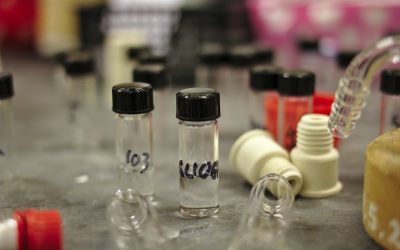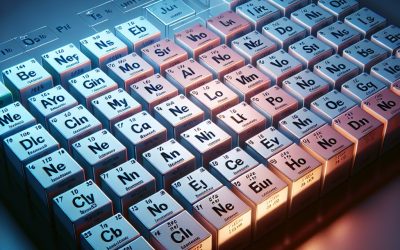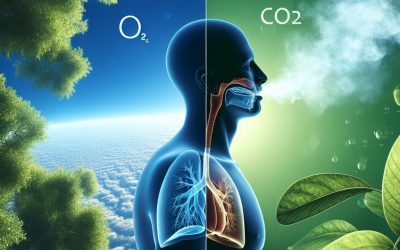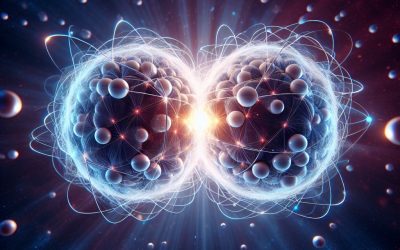🧪 Introduction to Chemistry
Unlocking the Secrets of Matter and Change
Chemistry is the science of matter—what it’s made of, how it behaves, and how it changes. It explores everything from the tiniest atoms and molecules to the vast chemical reactions that fuel stars, power engines, and sustain life itself. Often called the “central science,” chemistry connects physics with biology, medicine, geology, environmental science, and even engineering.
At its core, chemistry seeks to answer questions like:
-
What is this substance made of?
-
How does it interact with other substances?
-
Why do some materials burn, rust, or dissolve?
-
How can we create new materials, medicines, or fuels?
From the food we eat to the air we breathe, from cleaning products to smartphones, chemistry is everywhere. It helps explain natural phenomena like fire, digestion, and photosynthesis, while also driving innovations in technology, health, and sustainability.
By studying chemistry, we gain a deeper understanding of the world at a molecular level—and the tools to change it for the better.
Boost Your Metabolism: Tips and Tricks for a Faster Fat Burn
Metabolism is a term that is often thrown around when discussing weight loss and overall health, but what exactly does it mean? In simple terms, metabolism refers to the chemical processes that occur within our bodies to convert food into energy. It is a complex system that plays a crucial role in maintaining our overall health and wellbeing. In this article, we will delve into the intricacies of metabolism and explore how it works, why it matters, and how we can optimize it for weight loss and improved health. Summary Metabolism is the process by which your body converts food into energy. A fast metabolism can help with weight loss by burning more calories at rest. Foods that boost metabolism include protein, spicy foods, and green tea. Exercise, especially strength training, can increase metabolism and burn fat. Staying hydrated and getting enough sleep are important for optimal metabolic function. Understanding Metabolism: How It Works and Why It Matters Metabolism can be defined as the sum of all the chemical reactions that occur within an organism to maintain life. It can be divided into two main types: catabolism and anabolism. Catabolism refers to the breakdown of molecules to release energy, while anabolism refers to the synthesis of molecules to build and repair tissues. Metabolism is essential for our overall health as it provides the energy needed for all bodily functions, including breathing, digestion, and circulation. It also plays a crucial role in maintaining a healthy weight. A slow metabolism can make it difficult to lose weight, while a fast metabolism can help burn calories more efficiently. The Importance of a...
Unravelling the Wonders of DNA Replication and RNA Transcription: A British Perspective
DNA replication and RNA transcription are fundamental processes in molecular biology that are essential for the transmission of genetic information. DNA replication is the process by which a cell duplicates its DNA, while RNA transcription is the process by which genetic information in DNA is transcribed into RNA molecules. These processes are crucial for the growth, development, and functioning of all living organisms. Summary DNA replication is the process of copying DNA, while RNA transcription is the process of making RNA from DNA. Enzymes such as DNA polymerase and RNA polymerase play crucial roles in DNA replication and RNA transcription. DNA proofreading and repair mechanisms are important for maintaining the integrity of genetic information. Prokaryotic and eukaryotic DNA replication differ in terms of the number of origins of replication and the complexity of the process. DNA replication initiation involves the binding of proteins to the origin of replication, while elongation involves the addition of nucleotides to the growing DNA strand. Telomeres are protective caps at the ends of chromosomes that shorten with each round of DNA replication, contributing to aging. RNA transcription involves the synthesis of RNA from a DNA template, followed by processing steps such as splicing and capping. RNA polymerase is the enzyme responsible for catalyzing RNA synthesis during transcription. Transcription in prokaryotes and eukaryotes differ in terms of the presence of introns and the involvement of transcription factors. Research in DNA replication and RNA transcription in the UK is focused on understanding the molecular mechanisms involved and developing new therapies for genetic diseases. The Basics of DNA Replication and RNA Transcription DNA replication is the process...
Exploring the Fascinating World of Inorganic Chemistry: A Journey into the Elements
Inorganic chemistry is the branch of chemistry that deals with the study of inorganic compounds, which are substances that do not contain carbon-hydrogen bonds. It focuses on the properties and behavior of inorganic compounds, as well as their synthesis and applications. Inorganic chemistry plays a crucial role in various fields, including materials science, pharmaceuticals, environmental science, and industry. Key Takeaways Inorganic chemistry is the study of elements and compounds that do not contain carbon. The periodic table is a tool used to organize and classify elements based on their properties. Chemical bonding is the force that holds atoms together in a molecule or compound. Inorganic compounds have unique physical and chemical characteristics that make them useful in a variety of applications. Inorganic reactions involve the combination and reaction of elements to form new compounds. Inorganic chemistry has applications in materials science, pharmaceuticals, manufacturing, and environmental remediation. The role of inorganic chemistry in industry is important for the production of goods and materials. Inorganic chemistry can have negative environmental impacts, but can also be used to remediate pollution. Inorganic chemistry is present in everyday household products and consumer goods. Future directions in inorganic chemistry include emerging technologies and research areas such as nanotechnology and renewable energy. The Periodic Table: A Guide to the Elements of Inorganic Chemistry The periodic table is a systematic arrangement of elements based on their atomic number, electron configuration, and recurring chemical properties. It provides a comprehensive guide to the elements and their properties, allowing scientists to understand and predict the behavior of different elements and their compounds. The periodic table is divided into groups and...
Exploring the Fascinating World of Coordination Chemistry: Understanding the Bonding and Properties of Metal Complexes
Coordination chemistry is a branch of chemistry that deals with the study of compounds formed between metal ions and other molecules or ions, known as ligands. These compounds are called metal complexes and they play a crucial role in various fields such as catalysis, materials science, bioinorganic chemistry, and medicine. The history of coordination chemistry can be traced back to the early 19th century when chemists began to study the properties of metal complexes. The field gained significant attention in the late 19th and early 20th centuries with the discovery of complex ions and the development of coordination theory by Alfred Werner. Werner’s work laid the foundation for our understanding of coordination compounds and earned him the Nobel Prize in Chemistry in 1913. Coordination chemistry is important in various fields due to the unique properties exhibited by metal complexes. These compounds often have distinct colors, magnetic properties, and reactivity compared to their individual components. This makes them useful in a wide range of applications such as catalysis, where metal complexes can accelerate chemical reactions, and materials science, where they can be used to design new materials with specific properties. Key Takeaways Coordination chemistry is the study of metal complexes and their properties. Metal complexes are important in many fields, including catalysis, materials science, and bioinorganic chemistry. Ligands and coordination numbers play a key role in the bonding of metal complexes. Spectroscopic techniques are used to study the properties of metal complexes. Coordination polymers have potential applications in areas such as gas storage and drug delivery. What are Metal Complexes and Why are They Important? Metal complexes are compounds formed...
Exploring the Versatility of Transition Metals in Modern Science and Technology
Transition metals are a group of elements that are found in the middle of the periodic table, between the main group elements and the inner transition metals. They are characterized by their unique properties, which set them apart from other elements. Transition metals have partially filled d orbitals, which allows them to exhibit a wide range of oxidation states and form complex compounds. They also have high melting and boiling points, good electrical conductivity, and are often highly resistant to corrosion. One of the key properties of transition metals is their ability to form stable coordination complexes with ligands. This property is due to the presence of empty d orbitals, which can accept electron pairs from ligands. These coordination complexes have a wide range of applications in various fields, including electronics, telecommunications, automotive industry, sustainable energy technologies, medicine, agriculture, environmental science, and materials science. Key Takeaways Transition metals have unique properties such as high melting and boiling points, variable oxidation states, and magnetic properties. Transition metals are used in electronics and telecommunications for their conductivity and magnetic properties. Transition metals are used in the automotive industry as catalysts for emissions control and as materials for lightweight construction. Transition metals play a crucial role in sustainable energy technologies such as solar cells and fuel cells. Transition metals have diagnostic and therapeutic applications in medicine, and are used in agriculture as fertilizers and pesticides. Applications of Transition Metals in Electronics and Telecommunications Transition metals play a crucial role in the field of electronics and telecommunications. They are used in the production of electronic devices such as transistors, integrated circuits, and memory...
Exploring the Fascinating World of Organometallic Chemistry: An Insight into the Bonding and Reactivity of Metal-Carbon Compounds
Organometallic chemistry is a branch of chemistry that focuses on the study of compounds containing bonds between carbon and a metal. These compounds play a crucial role in various fields, including catalysis, drug discovery, and industry. Organometallic chemistry has revolutionized the way we understand chemical reactions and has led to the development of new materials and processes. Key Takeaways Organometallic chemistry involves the study of compounds containing metal-carbon bonds. Metal-carbon bonds play a crucial role in the reactivity of organometallic compounds. Organometallic compounds are important catalysts in various industrial processes. Recent advances in organometallic chemistry research have led to new applications in drug discovery. The future of organometallic chemistry presents both opportunities and challenges for sustainability and environmental impact. The Role of Metal-Carbon Bonds in Organometallic Chemistry Metal-carbon bonds are the foundation of organometallic chemistry. These bonds occur when a carbon atom forms a direct bond with a metal atom. The metal can be any element from the periodic table, such as iron, copper, or platinum. Metal-carbon bonds can be classified into three main types: sigma (σ), pi (π), and delta (δ) bonds. Sigma bonds occur when there is direct overlap between the atomic orbitals of the metal and carbon atoms. Pi bonds occur when there is lateral overlap between the p orbitals of the metal and carbon atoms. Delta bonds occur when there is overlap between the d orbitals of the metal and carbon atoms. Metal-carbon bonds are essential in organometallic chemistry because they determine the reactivity and stability of organometallic compounds. These bonds can undergo various reactions, such as oxidative addition, reductive elimination, and insertion reactions. The...
Exploring the Fascinating World of Main Group Chemistry: From Elements to Applications
Main group chemistry refers to the study of elements in the s and p blocks of the periodic table. These elements are also known as representative elements, as they exhibit a wide range of chemical properties and play a crucial role in various fields. Main group elements include metals, nonmetals, and metalloids, and they are essential for understanding the fundamental principles of chemistry. Main group chemistry is important in many areas, including materials science, medicine, environmental sustainability, energy technologies, and more. By studying the properties and behavior of main group elements, scientists can develop new materials, improve existing technologies, and find solutions to global challenges. Key Takeaways Main group chemistry involves the study of elements in groups 1, 2, and 13-18 of the periodic table. The periodic table is a useful tool for understanding the properties and behavior of main group elements. Bonding and structure are important concepts in main group chemistry, influencing the properties and reactivity of compounds. Main group elements have a wide range of applications in everyday life, from medicine to energy technologies. Research in main group chemistry is focused on emerging trends and addressing challenges for future generations. The Periodic Table: A Comprehensive Guide to Main Group Elements The periodic table is a systematic arrangement of elements based on their atomic number and chemical properties. It is divided into several blocks, with the s and p blocks containing the main group elements. The s block consists of groups 1 and 2, while the p block consists of groups 13 to 18. Main group elements can be classified into metals, nonmetals, and metalloids. Metals are typically...
Ozone
Ozone Ozone is an allotrope (an allotrope is another form of an element for example graphite and diamond are allotropes of carbon) of oxygen with the chemical symbol O3. Normal oxygen which has only 2 atoms is colourless and tasteless while ozone which contains three atoms is blue and said to smell of sparks or gun powder. It is very reactive and at even small concentration it is toxic and an irritant. Ozone is far more reactive than 02 as the extra oxygen atoms readily attaches to other particles causing oxidization of that particle. Its oxidizing properties are utilized in deodorants and bleaches as the process neutralizes pollutants. For this purpose ozone is produced by passing electric currents through 02 gas or dry air replicating the process of lightning. In our upper atmosphere, the ozone layer protects the inhabitants of earth from harmful U.V. rays released by the sun. Ozone is also found much closer to the earth’s surface where its effects can cause respiratory problems for people especially those who suffer from asthma etc. In our upper atmosphere, the ozone layer protects the inhabitants of earth from harmful U.V. rays released by the sun. Ozone is also found much closer to the earth’s surface where its effects can cause respiratory problems for people especially those who suffer from asthma etc. Ozone that is found at ground level (tropospheric level from 0-10 kilometers up) is created through chemical reactions between volatile organic compounds and oxides of nitrogen commonly produced by cars and some factories. Nitrogen dioxide and oxygen react together with UV light to produce Ozone but in...
Periodic Table Test
Your Periodic Table Test may take a minute to load. If you have to navigate away from this page for any reason, don’t worry, you will have the option to resume your test from the point you left upon your return. The test may have multiple choice, multiple answer or true/false questions and is timed but has no time limit. It should be considered an aid to study for exams or merely a test of your knowledge base giving you indication of areas you may need further study in. Once you have completed your test you will be able to review your results. This will give you some indication of the area you need further study or which areas you are proficient. We recommend you take the Periodic Table Test before reading the subject matter. If you score 80% or more than you have the option of skipping the section but if you score less than 80% we recommend you read the material associated. Then try the test again until you are able to gain a passing result of 80% correct. Error: Embedded data could not be displayed. Why Use the Periodic Table Test? As previously stated tests give the user indication of their strengths and weaknesses. This allows them to spend less time studying things they are proficient in and spend more time improving their knowledge where they may have gaps. Tests are also a great tool for revision because they require the user to recall information they may have previously learnt, be it recently or some...
Periodic Table of Elements
Oxygen
Oxygen is the third most abundant element in the universe and highly reactive forming compounds with almost all the other elements Basic Information Discovery Sources The Ozone Layer Uses of Oxygen Living Organisms Oxygen rich combustion Fuel Cells Cell Structure Absorption Lines Emission Lines Oxygen Basic Information Classification: non-metal Atomic Mass: 15.99 u Density: 1.429 g/l Colour: None Boiling Point: 90.188 K (-182.962°C) Melting Point: 54.36 K (-218.79°C) Discovery Oxygen was discovered in 1774 by English chemist Joseph Priestly, which he isolated by heating mercuric oxide (HgO). Sources Oxygen is the third most abundant element in the universe and highly reactive forming compounds with almost all the other elements. At the creation of earth it combined with silicon to create our crust, hydrogen to create water and it makes up 20.8 % of the air in atmosphere. The Ozone Layer Ozone is an allotrope (an allotrope is another form of an element for example graphite and diamond are allotropes of carbon) of oxygen with the chemical symbol O3. In our upper atmosphere the ozone layer protects the inhabitants of earth from harmful U.V. rays released by the sun. Ozone layer is also found much closer to the earth’s surface where its effects can cause respiratory problems for people especially those who suffer from asthma etc. Uses Living Organisms Oxygen is necessary for all life. It is used by every cell in living organisms, except somatic cells (sperm and egg cells), to produce the energy they require through aerobic...
Nuclear Fusion
Nuclear Fusion is the name given to the the event when the nuclei of two atoms combine creating a new heavier atomic nucleus. What is Nuclear Fusion? Overcoming the Electromagnetic Force Nuclear Fusion in Stars Energy Production through Nuclear Fusion What is Nuclear Fusion? Nuclear Fusion is a phenomenon where by the nucleus of two atoms fuse together creating a new heavier atomic nucleus. When two relatively small atomic nuclei have very high energies they are able to bond or fuse together making larger atoms. The atomic nuclei require a lot of energy to overcome the effects of the electromagnetic force before it is possible for nuclear fusion to occur. Overcoming the Electromagnetic Force Normally the electromagnetic force causes atomic nuclei to repel each other due to their positive charge, much like the same poles on a magnet. Electromagnetic force which causes the repulsive action quadruples as the distance between the two protons halves. This means that it takes a lot of energy to get these two protons, and two nuclei together. If they are able to get close enough another fundamental force, The Strong Force, comes into play and this force is much stronger than the electromagnetic force. It is the force that holds all nucleons together but they must be within one femtometres (the nucleus of an average atom is 4 femtometres in diameter). A = The Nucleus of the atom contains the protons and neutrons. Despite accounting for the majority of an atom’s mass, the nucleus procures a minute proportion of the total space. The Diameter of the nucleus is approximately 4 femtometres or 4...












